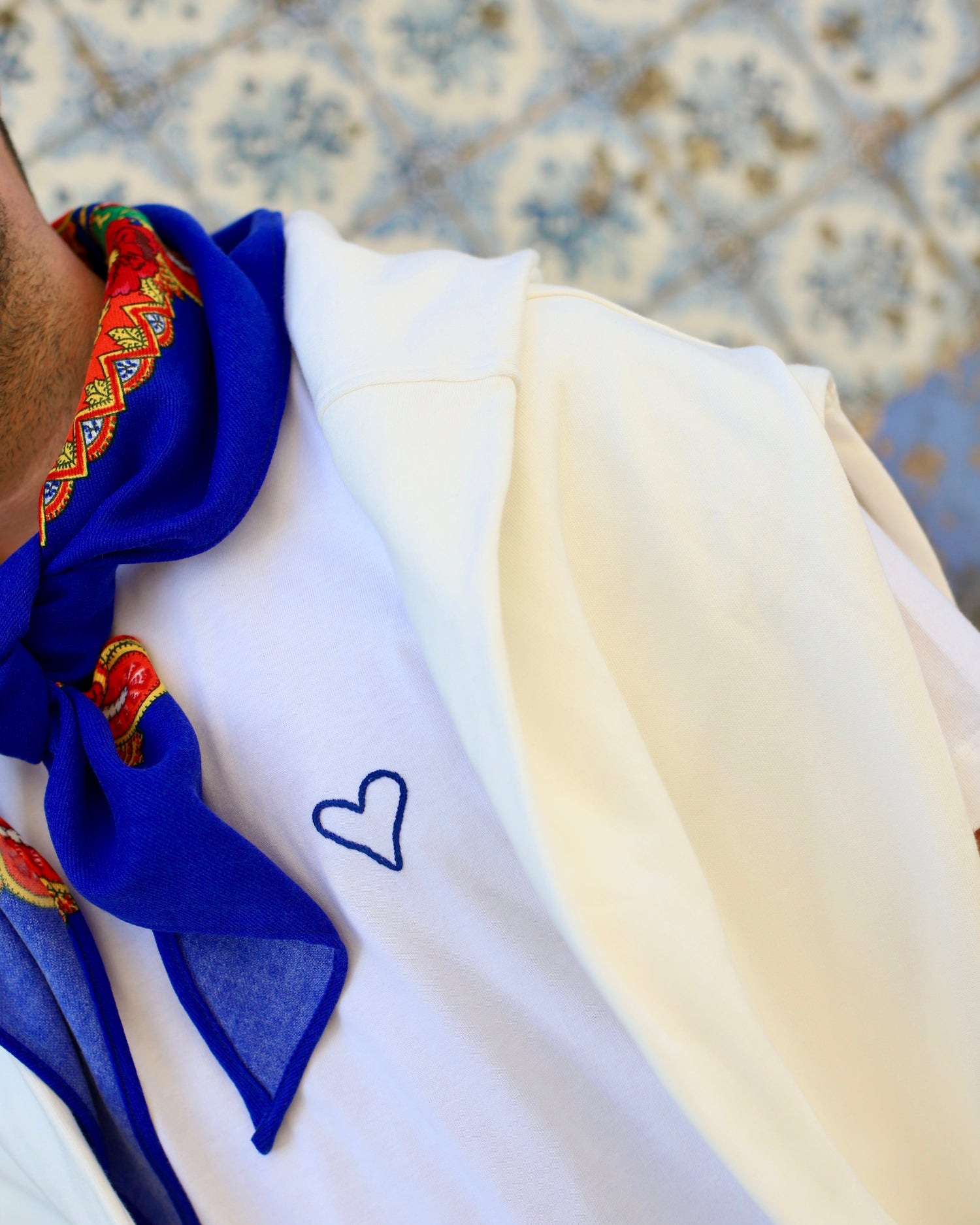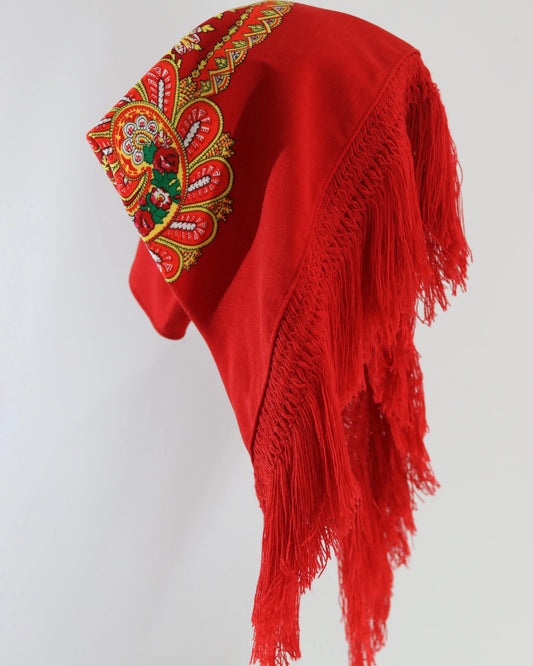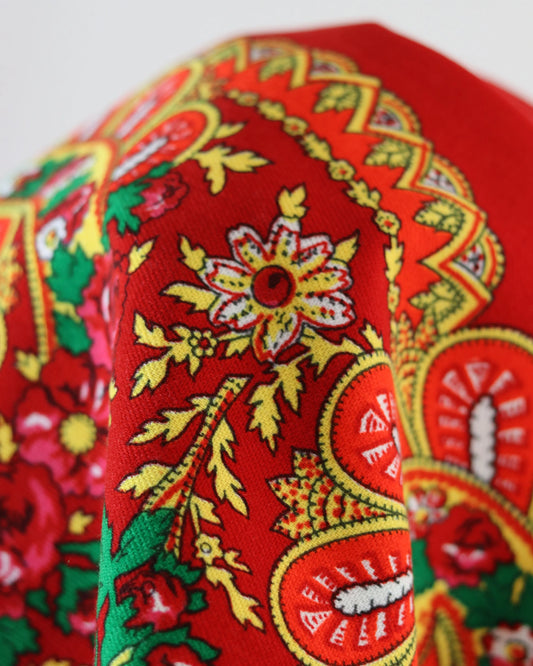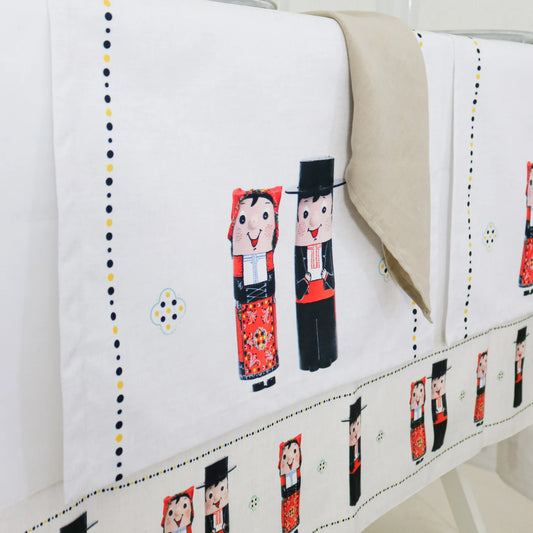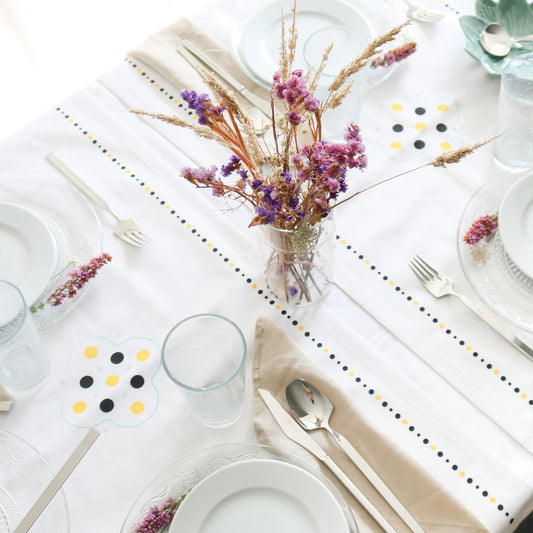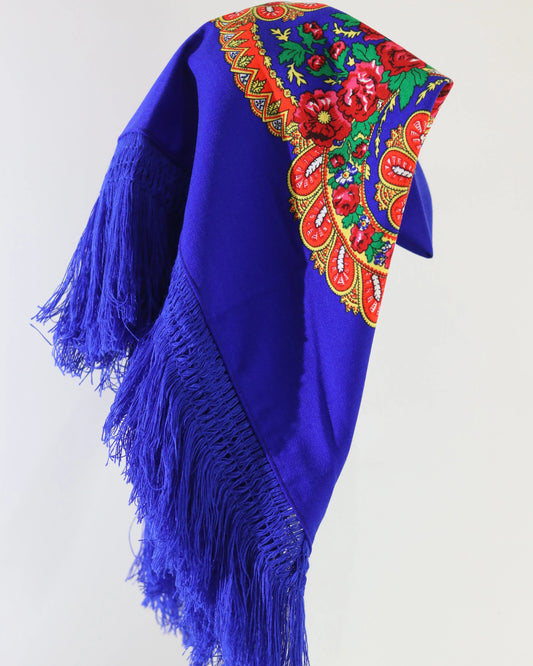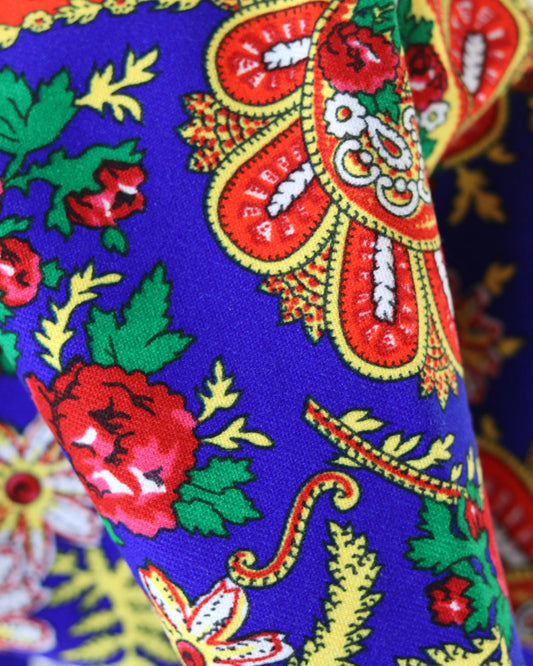The power of feminine strength in Viana's costumes
The eye rests on a colorful scarf, follows the line of an apron covered in ears of corn, hearts, and flowers, and encounters the shimmer of a filigree that seems to breathe. Viana's costumes are not just beautiful. They are a statement. The feminine presence, with her voice woven in wool and linen, commands the scene, confident in her step and gaze. It is not an ornamentation of the past; it is a force that reveals itself.
There's a reason for so much attention. Each piece carries the memory of work in the fields and by the river, of noisy markets, of promises exchanged in handkerchiefs, and of faith celebrated in the streets. Viana's attire united women in community knowledge, gave them visibility, and elevated crafts and narratives that often didn't fit into books. Clothing, here, is power.
Living history embroidered in wool and linen
Viana do Castelo, in Minho, has consolidated a material culture over the centuries, in which women's attire is the protagonist. Woolen skirts, richly embroidered aprons, intricately worked linen shirts, and head and chest scarves formed a functional yet majestic ensemble.
Their origins are rooted in rural and maritime life. Women managed the home and fields while men set off to fish for cod or engage in seasonal migration. This context shaped robust pieces, suited to daily tasks, which, on festive days, gained layers of adornment and meaning.
Embroidery was the chosen voice to tell the story. Ears of corn celebrate harvests, birds and flowers invoke fertility and joy, and Viana's heart is a promise of affection and devotion. The garment evolved with the women who wore it and the artisans who made it, passing down techniques, patterns, and secrets of execution from mother to daughter.
What changes when a woman wears Viana
Wearing the costume means assuming a respected role in the community. At a party, a woman wears her best version, with the right amount of gold and the wisdom of combining colors and embroidery. The world watches, and she holds its gaze.
This gesture has effects that go beyond aesthetics:
- It confers public presence and social position.
- It values women's craftsmanship, transforming hours of sewing and embroidery into heritage.
- It strengthens community bonds through shared rituals, such as the Stewardship Parade.
- It educates the eye, the body and respect, because each piece has rules for placement and care.
There is power in mastering this code. And there is freedom in how each person interprets it.
The main variations of women's attire
There's no one-size-fits-all outfit. There are compositions, eras, and contexts. Even so, some outfits have become iconic, recognizable on the street and in museums.
| Costume | Dominant colors | Materials | Embroidery and motifs | Jewelry | Occasion | Idea-force |
|---|---|---|---|---|---|---|
| Red farmer | Red, white, multicolored details | Wool (skirt and apron), linen (shirt), cotton | Agricultural and floral motifs, hearts, ears of corn | A few gold pieces, moderation in everyday life | Simple work and party | Vitality and work |
| Blue Washer | Blue, white, multicolored details | Wool, linen | Colorful embroidery with cooler balance | Gold in variable number | Festival and pilgrimage | Serenity and elegance |
| Butler | Black with sparkles, white on the shirt | Heavy wool, velvet, linen | Black embroidery, glass beads and light-catching applications | Abundant Minho goldsmithing | Parade of Stewardship, great parties | Prestige and authority |
| Bride | Deep black, white on the veil or scarf | Fine wool and linen | Discreet embroidery, focus on the purity of the whole | Significant but more symbolic gold | Wedding ceremony | Commitment and continuity |
| Sunday driver | More restrained colors, soft contrasts | Wool and linen | Medium density embroidery | Moderate gold | Sunday and family occasions | Respect and sobriety |
These categories don't exhaust reality. Popular creativity, local influences, and eras have generated combinations that breathe freedom within precise cultural rules.
The gold that speaks: filigree, symbols and inheritances
No element captures attention as much as jewelry. Minho filigree is a refined technique, with gold threads worked to the limit of possibility. Openwork hearts with arabesques, crosses and reliquaries, beaded necklaces and cords, classically designed earrings, and medals that preserve family histories.
Gold isn't vanity. It's savings and inheritance, a visible safe that travels in the chest. In times of economic uncertainty, gold was security. On festive days, it was also a declaration of belonging and achieved prosperity. Each piece is often given at crucial moments: baptisms, engagements, weddings. It's left to daughters, as if passing on an entire chapter of history.
There are subtle codes in the way it's worn. The order of the brooches, the connection between the scarves and necklaces, the right time for the heart to rest. The experienced hand discerns the difference between disorganized excess and harmonious abundance.
To embroider is to write: techniques, motifs and messages
Aprons and skirts speak volumes. They reveal who embroidered it, in which village, and at which school they learned. Techniques like satin stitch, chain stitch, stem stitch, cutout, and appliqué work with wool and thread patiently. The linen shirt, almost always white, is a field of lace and open hems that beg for light.
Common reasons:
- Spikes and bunches of grapes, a sign of fertility and fruitful labor
- Hearts of Viana, devotion and affection
- Birds, flowering branches, carnations, lilies
- Geometric elements that mark rhythm and symmetry
There's a grammar all its own. The trained eye can distinguish an apron with a full, frontal design, sometimes in a concentric composition, from a lighter one, distributed in branches. Harmony results from a mind that imagines the body in movement.
Body, movement and power
A woman from Viana walks with the rhythm of someone who has learned to dance the vira. Her attire shapes her posture. The skirt creates a circle, the apron marks the center, the scarf frames the face, and the gold projects light.
It's not a passive adornment. It's a body that occupies space, demanding the right distance and respect. There's strength in the verticality and rhythm that the attire produces. At work, the same body has resources: lifting the skirt just right, protecting the head, adapting the footwear. At a party, the same outfit takes on a different tone, the colors shine, the embroidery speaks louder.
One sentence is enough: the outfit magnifies the person.
Community and ritual: Pilgrimage of Agony and Parade of Stewardship
Viana celebrates its biggest festival in August. The pilgrimage in honor of Our Lady of Agony transforms the city. Colorful salt carpets line the streets, the procession to the sea blesses fishermen and boats, and accordions and bass drums mark the collective pulse.
The moment that leaves the air suspended is the Stewardship Parade. Hundreds of women of various ages march in impeccably dressed gold in perfect cadence. The parade isn't a spectacle in the empty sense of the word. It's a community affirmation, an alignment of knowledge, local pride, and recognition of the role of women. It showcases what the city values.
It's important to note: the pilgrimage doesn't protect heritage if it becomes a mere showcase. Behind the scenes counts as much as the stage. It's the homes, the workshops, the evening conversations, and the rehearsals that sustain public beauty.
Workshops, museums and hands that never forget
The feminine power of costumes also resides in those who preserve and teach them. In Viana do Castelo, the Costume Museum preserves, studies, and exhibits pieces that document centuries of transformation. It's a place to learn about cuts, materials, variations, and origins.
Workshops and embroiderers keep the pulse alive. Cutting the skirt, preparing the linen, choosing the wool, designing the motif on the apron, dividing the hours into meticulous stitches. There are masters who guide new generations with rigor and openness. The local economy thrives through these crafts, with orders for pilgrimages, festivals, and migrants who return in August eager to dress their land.
Preservation isn't about crystallizing. It's about ensuring continuity with criteria. Documenting, certifying, teaching, and providing decent pay to those who know how to do it.
Responsible reinventions and current fashion
Costumes don't live solely in tradition. Designers, goldsmiths, and embroiderers create contemporary interpretations that respect essential rules. Modern-cut dresses incorporate Minho embroidery, jewelry with simplified filigree, and scarves reinterpreted in lightweight materials. When there's listening and care, innovation enriches the cultural and economic ecosystem.
Criteria for a reinvention that makes sense:
- Technical knowledge of historical costumes, with serious study
- Quality materials and transparent production chain
- Partnership with local artisans, with fair pay
- Clear distinction between traditional costume and inspired creation
- Documentation that accompanies the part, so that the customer knows what they have
The result can reach new audiences, strengthen cultural tourism, and give new life to workshops. The key is respect.
Quick guide to looking at an outfit carefully
An informed eye captures details that many miss. On your next visit to Viana, stop and observe:
- Scarves: the headscarf and the chest scarf complement each other. Pay attention to the pattern, color, and tying style.
- Shirt: white linen with lace and open hems, raised cuffs and collar.
- Vest: fits the torso and shapes the silhouette, often in richer fabric.
- Skirt: generous flow, weight that adds presence. Embroidery and hems define hierarchy.
- Apron: the canvas where embroidery speaks loudest. Central motif, branches, balance.
- Pocket: hanging pocket, small treasure of utility and adornment.
- Socks and shoes: discreet details that complete the outfit.
- Gold: the order of necklaces, brooches, Viana's heart, earrings. Nothing is left to chance.
This visual exercise sharpens sensitivity and increases the pleasure of watching a fashion show or visiting an exhibition.
Viana for those who want to learn more
Planning a trip in advance allows you to truly immerse yourself in the city's fabric. A possible itinerary:
- Viana do Castelo Costume Museum
- Permanent and temporary exhibitions on costume variations
- Workshops and educational activities throughout the year
- Jewelry stores and filigree workshops
- Traditional pieces and contemporary lines
- Possibility to see manufacturing processes, when the studio allows it
- Embroidery and sewing workshops
- Orders for aprons and scarves
- Conversations with embroiderers who still draw motifs by hand
- Pilgrimage in August
- Stewardship Parade
- Salt carpets and procession to the sea
- Folk groups and concertinas, with costumes in motion
It's best to book in advance and prioritize local suppliers. The cultural and economic impact multiplies.
Ethics of use, photography and sharing
Treating clothing with respect is the responsibility of those who wear it, photograph it, or publish it. Some simple practices protect people and property:
- Ask for consent before taking close-up photos.
- Correctly identify outfits and avoid generalizations.
- Do not handle old parts without guidance.
- Credit artisans, workshops, and sources whenever possible.
- Differentiating traditional attire from modern inspiration when posting.
The dignity of the subject comes first. The image must serve the culture, not the other way around.
Heritage education: schools and families as guardians
Continuity depends on audience development. Schools that invite embroiderers for hands-on sessions create lasting memories. Families who share the story of each piece pass on the root of care to the next branch. Libraries and museums that offer pattern books and technical studies support those who want to learn seriously.
There's room for projects that combine technology: digital archives of motifs, workshop mapping, audiovisual recording of techniques. All of this without easily replacing manual knowledge. The goal is to provide tools, not to empty the creative hand.
Economy and future: value that remains in the territory
Every costume sold, every apron ordered, every piece of gold purchased from a local goldsmith retains value in the city. The chain is long: linen and wool producers, dyers, traders, seamstresses, embroiderers, goldsmiths, photographers, cultural guides. The future of costume is also written in invoices, contracts, and public policies that view the sector as strategic.
Some pragmatic ideas:
- Origin and quality certifications for traditional pieces
- Funded apprenticeship programs for new embroiderers
- Incentives to buy locally during the pilgrimage
- Partnerships between museums, schools and studios for artistic residencies
When the social fabric is organized, culture gains time.
Small questions to take to the street
- What does the color combination I see tell me?
- What motifs are repeated on the apron and why?
- How do gold and fabric interact in this person?
- Which embroidery technique is most present here?
- What stories could be associated with the jewelry I see?
Mentally answering these questions sharpens our listening skills. The feminine power in Viana's costumes becomes even more evident when we take this time.



